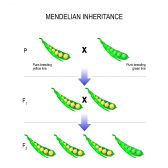Definition
noun, plural: appendixes
(1) (anatomy) A worm-shaped, vestigial process extending from the lower blind end of the cecum
(2) (anatomy) An appendage, a process, or a projection
Supplement
In anatomy, the term appendix pertains to a process or an appendage, such as it is used in the following terms: appendix of the epididymidis, appendix of the testis, vermiform appendix, etc.
The appendix of epididymidis is a small a small pedunculated body often attached to the head of the epididymis which is a vestige of the embryonic mesonephric duct.1 The appendix of the testis pertains to a vesicular non-pedunculated structure attached to the cephalic pole of the testis. It is a vestige of the cephalic end of the paramesonephric (mullerian) duct.2 The vermiform appendix is a worm-shaped process that projects from the blind end of the cecum. It is a vestigial process resembling a small pouch. For herbivores, the appendix is essential since it is responsible for the breaking down of cellulose present in the cell wall of plants. In humans and other animals, the appendix became a redundant process since it has no particular daily function.
Related term(s):
- Appendix ceci
- Appendix epididymidis
- Appendix of the testis
- Fibrous appendix of liver
- vermiform appendix
Reference(s):
1 Appendix epididymidis. BiologyOnline.com Dictionary. Retrieved from ://www.biologyonline.com/dictionary/Appendix-epididymidis.
2 Appendix of the testis. BiologyOnline.com Dictionary. Retrieved from ://www.biologyonline.com/dictionary/Appendix-of-the-testis.







